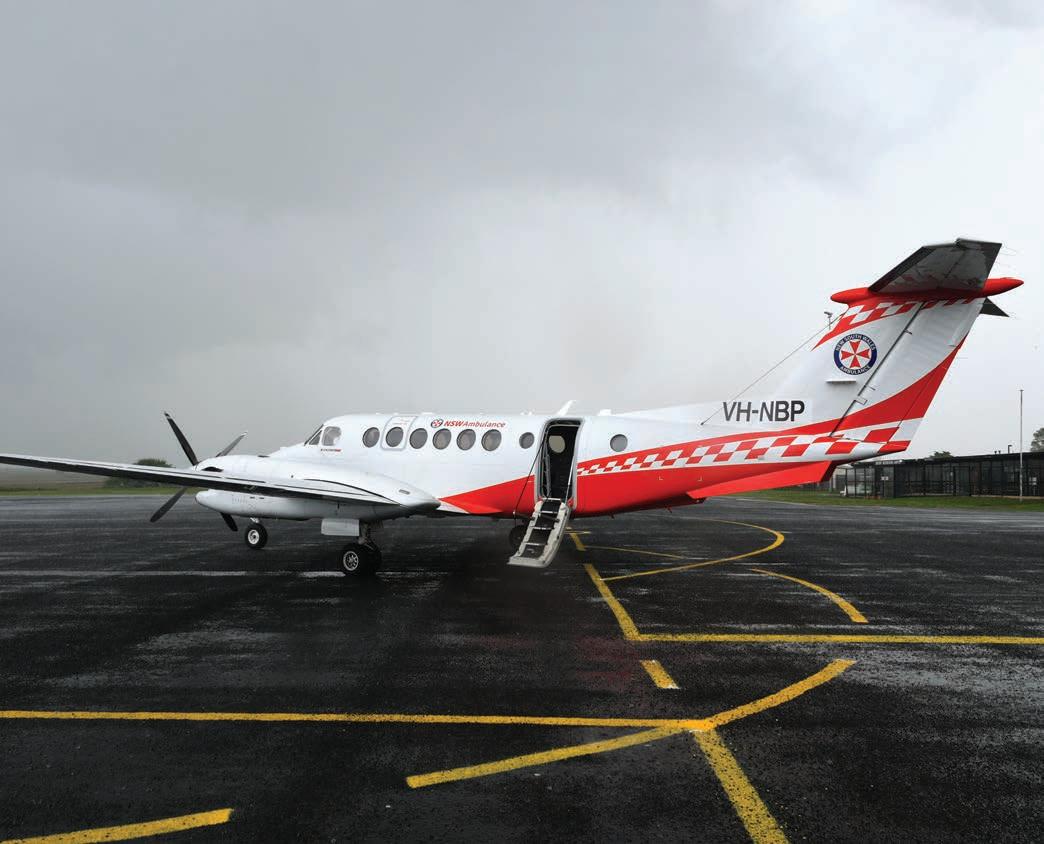
1 minute read
A day with an Air Ambulance pilot
FOR MORE than two decades, Rex has been a lifeline, helping Australians battle the tyranny of distance. However, we’ve spread our wings to become more than just a regional airline.
The Rex Group comprises five companies, including Australia’s largest independent regional and domestic airline, as well as pilot training, propeller maintenance, air freight and charter services.
Advertisement
While everything we do is about connecting Australia, our aeromedical operations are one of our most unique aspects.
Rex subsidiary company, Pel-Air Aviation, has been providing fixed wing air ambulance services to Ambulance Victoria since July 2011, and took over the New South Wales Fixed Wing Air Ambulance service based out of Mascot, Sydney, in January last year.
Using a fleet of state-of-the-art aircraft, Pel-Air facilitates ambulance services in providing critical care to patients by transporting patients from regional and rural areas to the closest hospital or specialist care, as well as delivering medical crews to remote patients in need.
Daniel is Pel-Air’s Senior Base Pilot for Mascot. Having been a regular transport pilot, he now oversees flight operations for Pel-Air’s New South Wales Ambulance contract.
“There isn’t really a typical day at the Air Ambulance,” he says.
Given the 24/7 coverage, a sign on could be in the early hours, or into the night.
“When the shift officially starts, a call is made to the control centre to check in and receive a tasking. Today we’ve had crews travel all over NSW on a variety of missions. From Sydney to Bourke, Dubbo, Walgett, Taree, Inverell, Williamtown and Albury.”
Along with Pel-Air’s team, there are dedicated professionals on the ground and in the sky. Patients are treated by exceptional flight nurses and doctors from NSW Ambulance while onboard the aircraft, truly making this service a “hospital in the sky”.
Meanwhile on the ground, the control centre is in constant communication. It coordinates any other medical support that may be required on landing as well as the road ambulances and paramedics to meet patients on arrival.
“Flying for the Air Ambulance is a brilliant combination of sightseeing, technical skills and teamwork,” says Daniel. “When the phone rings, it’s all hands on deck. Pilots are preparing the flight plan, the ground team reconfigure the aircraft with the required medical equipment, and often the flight nurse is still filling you in on the patient details as the aircraft door is closed and the engines begin turning. Our teams are very good at what they do.”
After graduating from high school, Daniel joined the Rex Pilot Cadet Program at the Australian Airline Pilot Academy in Wagga Wagga,











